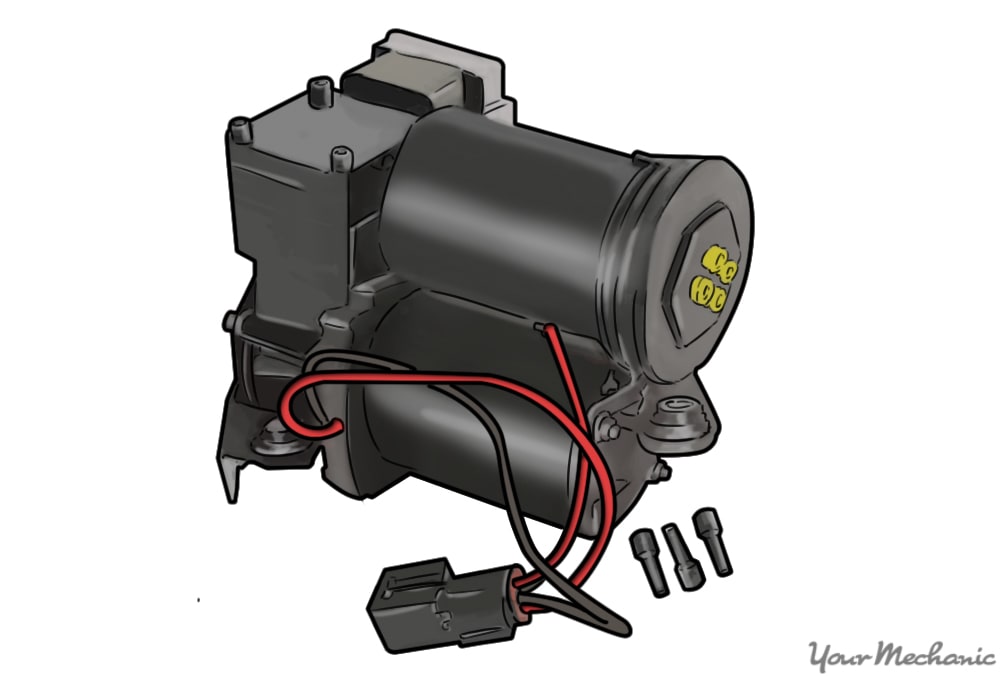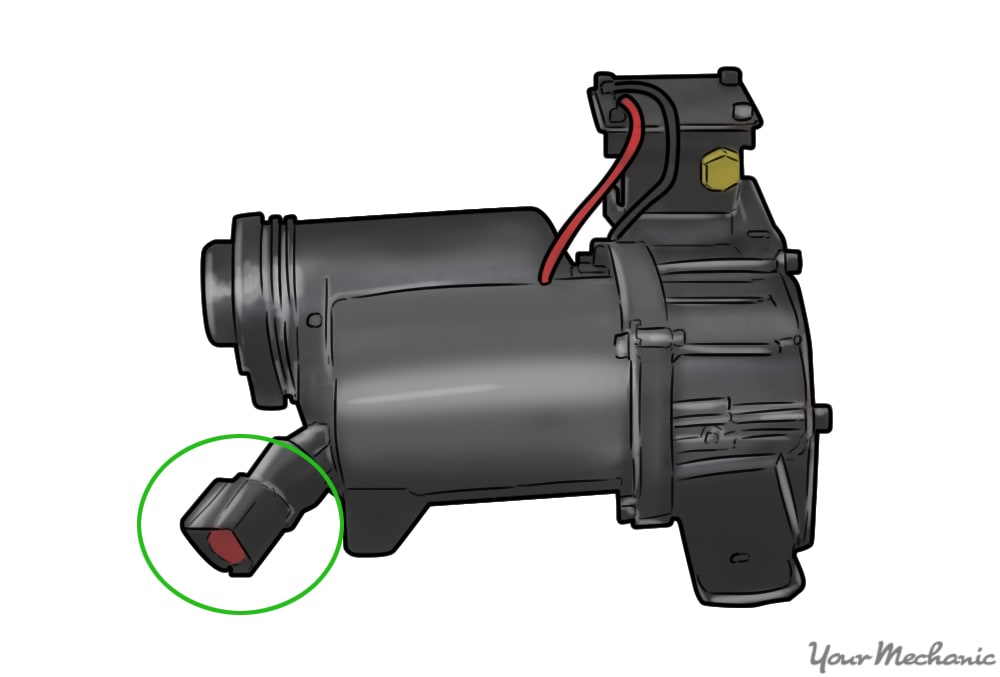

The air compressor is the heart of an air suspension system. It controls the pressurization and depressurization of the pneumatic system. Without the air compressor, the entire suspension system would not be able to function. You will be able to tell if your air suspension air compressor is failing if the vehicle starts to ride lower than usual or the vehicle ride height never changes when the vehicle load changes.
Materials Needed
- Basic hand tools
- Scan tool
Part 1 of 2: Removing the air suspension air compressor from the vehicle.
Step 1: Turn the ignition switch to the ON position.
Step 2: Release the air pressure. Using the scan tool, open the vent valve and relieve all of the air pressure from the air lines.
After the air lines have been depressurized, close the vent valve. You do not have to deflate the air springs.
- Warning: Vent all air pressure from the air suspension system prior to disconnecting or removing any air suspension components. Failure to do so may result in serious personal injury.
Step 3: Turn the ignition switch to the OFF position.
Step 4: Disconnect the air line from the compressor dryer. The air line is attached to the air compressor using a push-to-connect fitting.
Press and hold the quick disconnect lock ring down (noted by the red circle above), then pull the plastic air line out from the air dryer.
Step 5: Disconnect the electrical connector. Automotive electrical connectors similar to the one shown have a positive lock on them that keeps the connector halves solidly attached to each other. Some lock release tabs require a slight pulling movement to separate the connector halves while other lock release tabs require you to press them to release the lock.
Locate the lock release tab on your connector. Depress the tab and pull the two halves of the connector apart.
Some connectors fit together very snug, so some extra force may be required to separate them.
Step 6: Remove the compressor. Air compressors are held to the vehicle by three or four bolts. Using the necessary size socket and ratchet, remove the bracket bolts that secure the air compressor to the vehicle, then remove the air compressor and bracket assembly from the vehicle.
Part 2 of 2: Installation of replacement air compressor into the vehicle
Step 1: Install the air compressor and bracket assembly into the vehicle. Place the air compressor into its designated location and insert the retaining bolts through the bracket assembly and into the hold-down fasteners in the vehicle.
Torque all fasteners to their specified amount (approximately 10 - 12 lb-ft).
- Note: When the air compressor is installed, make sure that the air compressor moves freely in the rubber isolators. This prevents noise and vibration from being transmitted from the air compressor to the body of the vehicle when the air compressor is operating.
Step 2: Reconnect the electrical connector to the compressor. The connector has an alignment key or a specific shape that prevents the connector from being improperly connected.
This connector halves go together in one way only. Slide the two mating halves of the connector together until the connector lock clicks.
- Note: To ensure that no noise or vibration issues arise, make sure that there are no objects trapped under or on the bracket and that the air compressor is not in contact with any of the surrounding components. Make sure that the compressor bracket has no deformations that could cause the rubber isolators to load against each other.
Step 3: Install the air line into the air dryer. Insert the white plastic air line into the push-to-connect fitting on the air dryer until it bottoms out. Gently pull on the air line to ensure that it is firmly engaged into the compressor.
No additional tools are needed for this step.
- Note: When installing the air lines, make sure the white inner air line is fully inserted into the fitting for correct installation.
If you’re still not sure what to do, the trained professionals at YourMechanic can replace the air compressor for you so you don’t have to get dirty, worry about tools, or any of that other stuff. Let them “pump up” your suspension.





